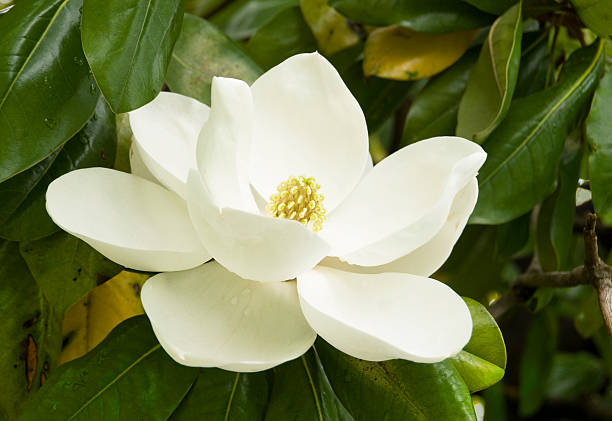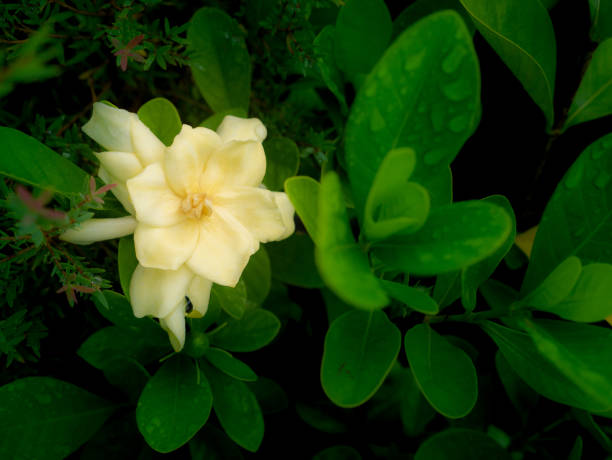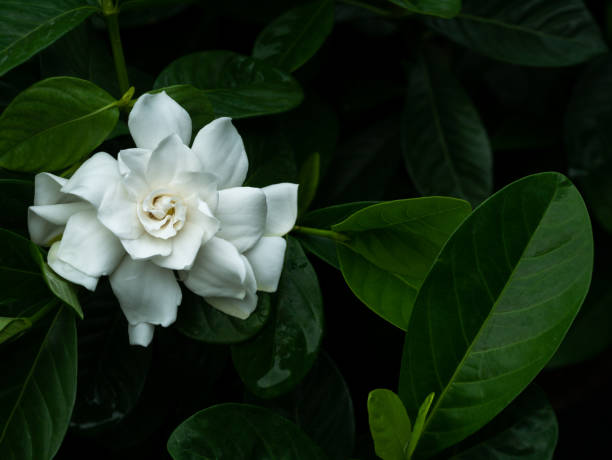Magnolia vs. Gardenia: The Real Differences Between the Two
Gardenia and Magnolia are two of the most popular flowering shrubs found in homes across the world. They might appear to be the same, there are some subtle differences. In some ways, both of these plants are similar to one another. They are both large flowering trees that produce blooms that are extremely large in size.
However, you’ll notice that the differences between magnolias and gardenias are largely limited to this. These two plants are very different from one another, and it’s important to understand what makes them so different.
Continue reading to learn more about gardenias and magnolias. This will assist you in distinguishing between the two, and you may even be able to decide which of them you would like to plant in your yard as a result.
Table of Contents
What Are the Differences?

The Size of Each Plant
Most gardenias are shrubs that grow to a height of 4-6 (1.2-1.8 m) feet on average. You can also buy gardenias that grow up to 12 feet (3.6 m) tall in the shape of a small tree available on the market.
Dwarf Radicans Gardenia is one of the tiniest gardenia cultivars available today. It reaches heights of up to 2 ft. (60 cm) and widths of 3-4 feet, and a width of up to 2 ft. (60 cm) in diameter (1-1.2 m). This variety has flowers that are snow-white in color.
Magnolias are taller than most other trees, reaching up to 8-10 feet in height. Their maximum size is 70-100 feet (20-30 m) high and 45 feet wide at their widest point (13 m).
Magnolia grandiflora, with a height of 90 feet (27.5 meters), is one of the largest magnolias on the planet. It also has a spread of 50 feet (15 meters).
Dwarf magnolias exist in contrast to their larger counterparts. Dwarf Magnolia soulangeana ‘Lilliputian’ grows to a maximum height of 4 feet (1.2 m) and is an ornamental tree. Because of its compact size and light pink flowers are an excellent choice for growing in small gardens.
Gardenia and magnolia grow at different rates, in addition to their differences in size.
Gardenias grow slowly compare to other plants because they are mostly shrubs. Their annual growth is approximately one foot on average. Plants that grow 1.5-2 feet per year are less common than those that grow more than that.
On the other hand, Magnolias grow at a rate of 2 feet or more per year on average. Young plants (2-3 years old) may be an exception; their annual growth may not exceed one foot for several years after planting, depending on the climate.

The Size of the Flower
Magnolias grow to be much larger than gardenias in size. A magnolia’s height and width are incomparably larger than a Gardenia’s, and there is no comparison between the two.
A mature magnolia can grow between eight and seventy feet in height, depending on the variety. Depending on its size, a mature magnolia can grow between four and forty-five feet in width.
Gardenias will only grow between four and twelve feet tall in their final state. When fully grown, they can reach a width of up to twelve feet.
If you’re looking for a very large tree, magnolia is the most appropriate choice for your situation. Gardenias will also look beautiful in your garden and will be especially suitable for planting in areas of your yard where you don’t have a lot of space.
The Scent
While gardenias definitely have a very sweet smell, their flowers are much more fragrant than magnolias. You can enjoy the scent of several different flowers in your yard at once, compared to one flower of magnolia, which is less favorable when compared with other varieties.
Hardiness
Magnolias are tougher than gardenia. Yes, some gardenias can tolerate frost, but most magnolias do not. Gardenia is hardy in zones 8–11. Few species can survive temperatures as low as 15°F (-9°C). The hardiest is Kleim’s Hardy, which can be grown in zone 7.
Not all gardenias can withstand frost. Some can only grow in warm 10 and 11 zones. Magnolias grow in 4-10 climatic zones. But not all of them can tolerate frost.
Varieties and Colors
Gardenia is comprised of approximately 140 species and 200 varieties. This has resulted in a significantly greater variety of magnolias to choose from with flowers of various colors and sizes.
Over 200 gardenia cultivars exist, ranging in size from dwarf groundcovers to shrubs that reach eight feet in both heights and spread. Flowers can be single or double, and their diameter varies from two to four inches depending on the cultivar.
Growth Rate
You’ll also notice that the growth rates of the plants are different from one another. Magnolias are known for their rapid growth rates.
Despite the fact that gardenias can grow rapidly, some of them can also grow at a moderate pace. Magnolia is a great choice for those who want something to grow quickly into a towering tree.
Cost
When compared to gardenias, magnolias are significantly more expensive on average. The purchase of gardenias may be more cost-effective if you’re looking for a flowering tree that will bloom year after year.
Understandably, magnolias would be more expensive than other types of trees. Magnolias grow to be much larger than gardenias in size.
The method of propagation of magnolias impacts the price of the trees. Magnolias are propagated primarily through grafting, which necessitates a significant time commitment on the grower’s part.
Gardenias can be propagated by taking simple cuttings from the plant. In addition to being a much less time-consuming method, it also makes it easier to reproduce and sell gardenias.
Life Cycle
Gardenias are all evergreen, which means that they do not lose their leaves during the autumn season like other plants. The leaves are still falling off in some places (2-3 years old leaves), but most of the foliage has survived.
Not all magnolias varieties are evergreen. Some plants shed their leaves at the end of the growing season, whereas others retain their green color throughout the entire season. New leaves emerge from the buds of deciduous magnolias in the spring, indicating the beginning of their growing season.
Because deciduous magnolias bloom before their leaves open, they have an advantage over evergreen magnolias. Consequently, flowers bloom on the tree branches, and there are no leaves on the trees, creating an absolutely stunning sight.
Magnolia virginiana, for example, is a semi-evergreen magnolia that blooms in the spring. When grown in cold climates, this type of magnolia sheds its leaves (hardiness zone 6 and above). In warmer climates, the leaves of the trees remain on the branches throughout the winter.

Landscaping
Magnolias make excellent specimen plants because of their size and flowers, which are available in various colors depending on the variety grown. A large amount of space is required for a magnolia to bloom to its full potential.
Gardenias are best suited for small areas near the residence. They can be grown as a low hedge or as shrubs with other plants. On the other hand, Gardenias are unique in that they include creeping varieties like Gardenia jasminoides ‘Radicans.’
Use this variety to cover the ground around your home. Beautiful white flowers set it apart from other plants of its genus.
Similarities
In terms of lighting and soil, these two plants are very similar. Both magnolias and gardenias thrive in either full sun or partial shade, but they do best in full sun.
Being aware of this is important because it provides you with various options for where to plant these trees in your yard. Providing your yard isn’t completely shaded, these trees should thrive in your environment.
You will also notice that both plants’ soil requirements are the same. You should keep the soil moist when planting magnolias and gardenias because they do best when they are planted in well-draining soil.
Maintaining the soil’s acidity level between 5.0 and 6.0 is appropriate for both plants and animals. Another reason why people associate magnolias and gardenias with each other is because of their similar appearance.
Which is Better?
The answer is both. Both the magnolia and gardenia are beautiful plants that do very well in the garden. However, they do have some important differences. Magnolias have a more open flower. They’re easy to find in the summer, but not during winter. Gardenias have smaller flowers and more stems, so they look prettier at any time of year.
